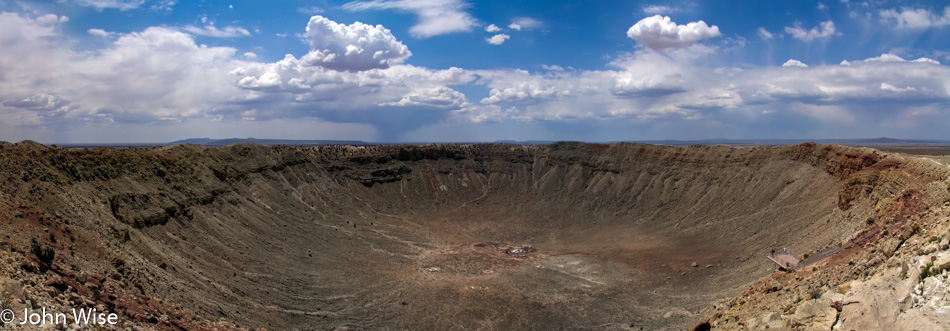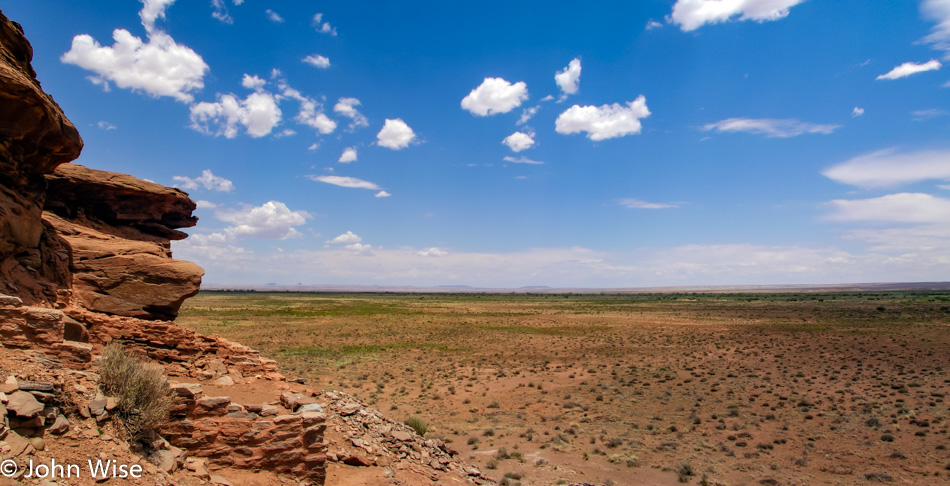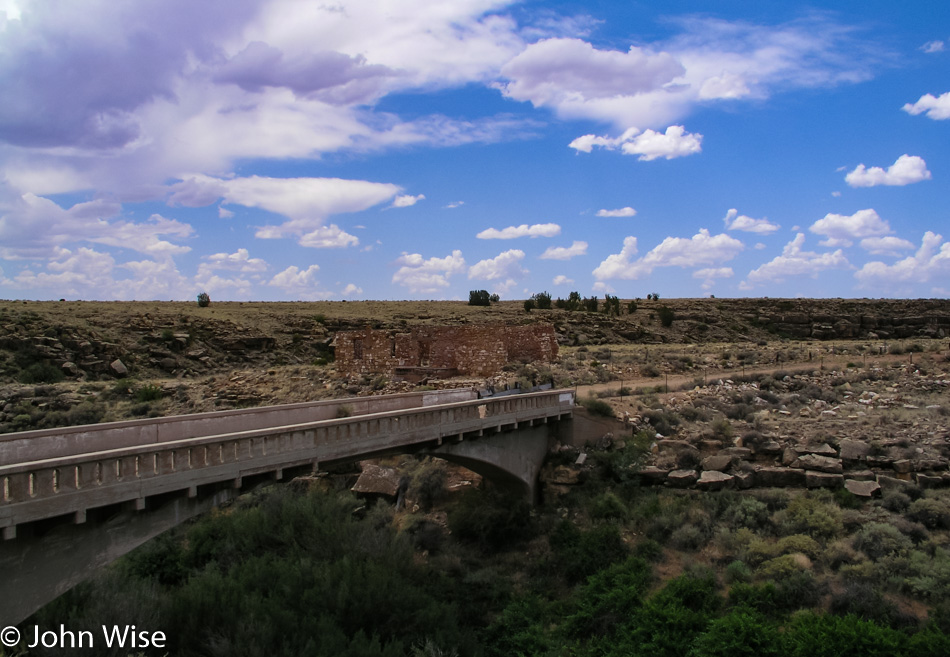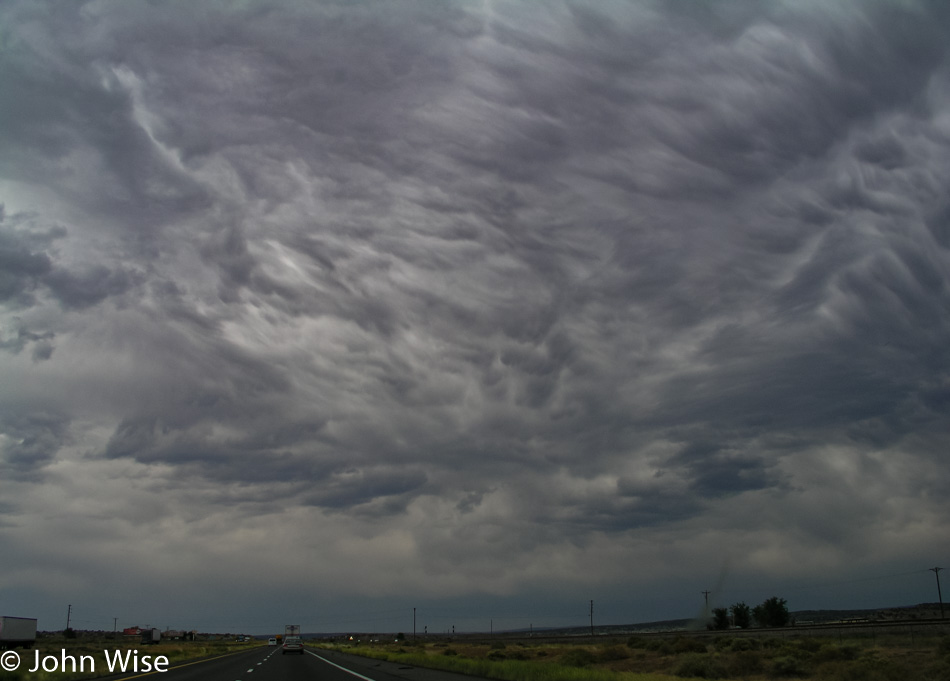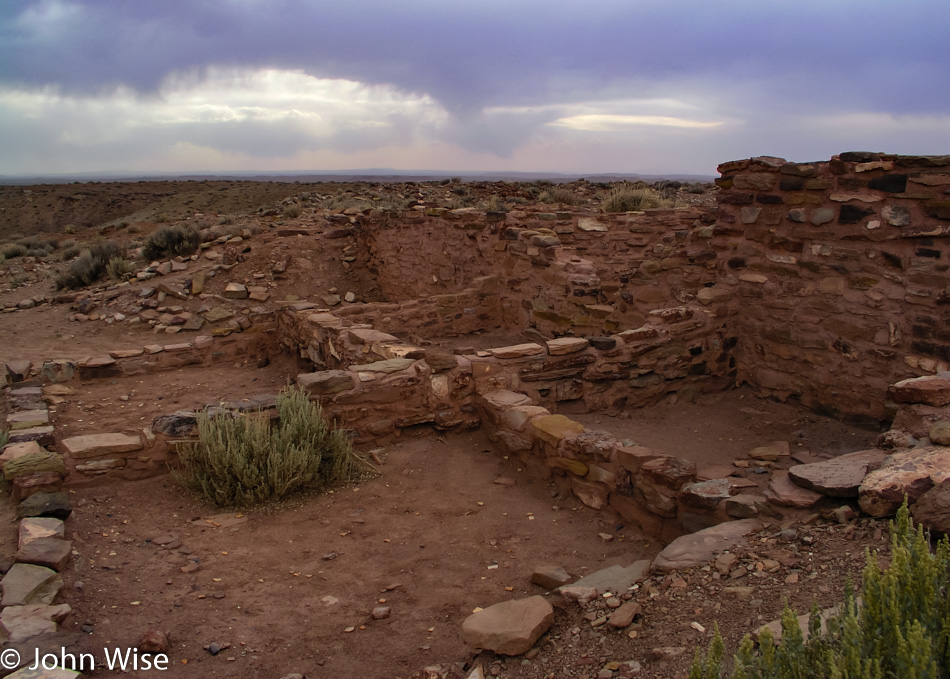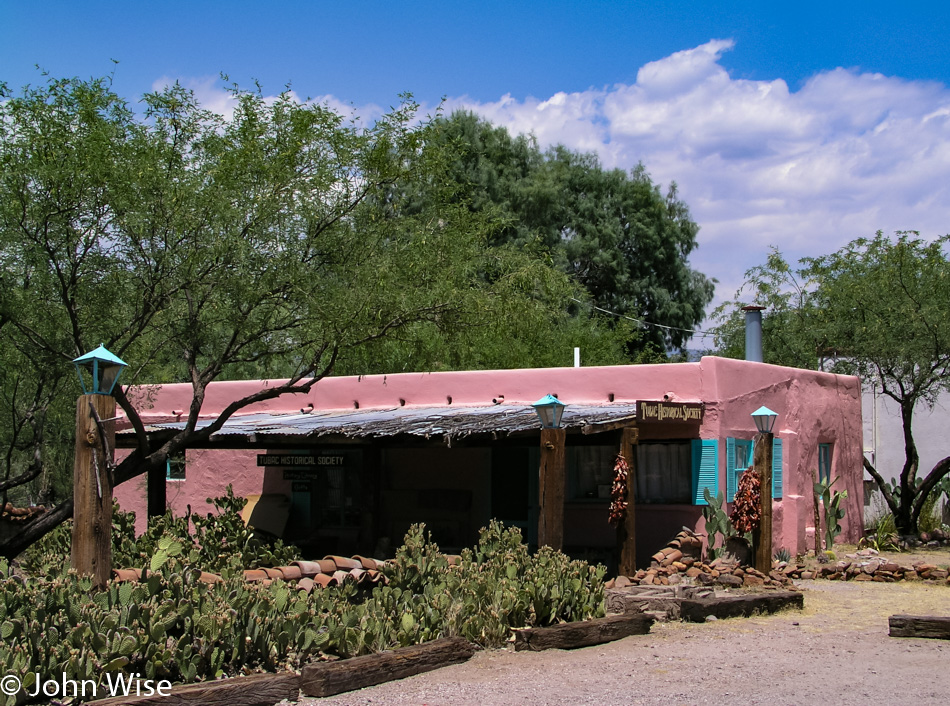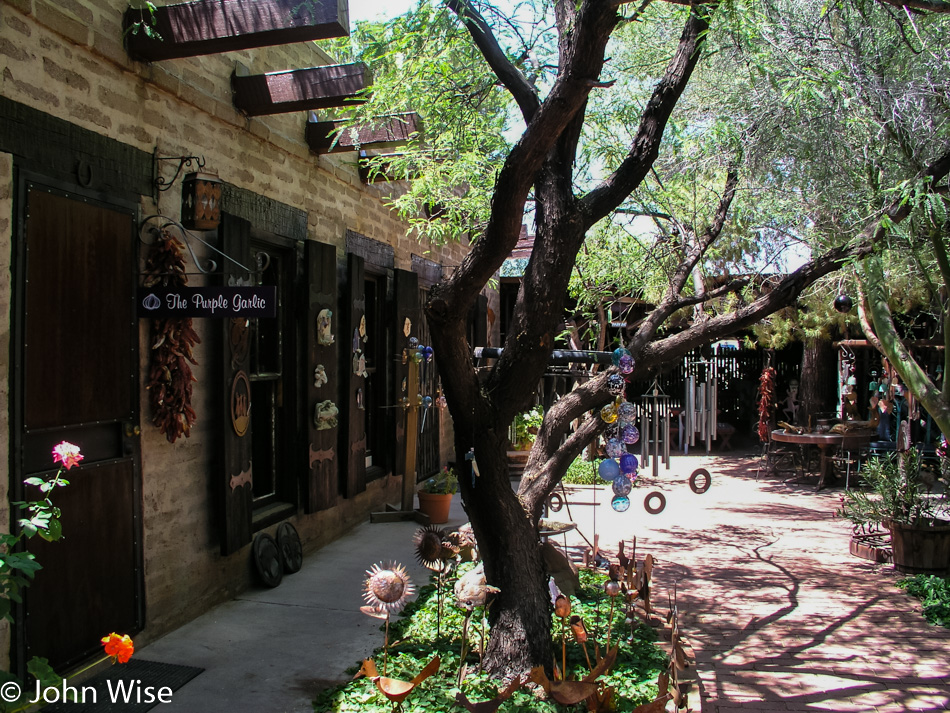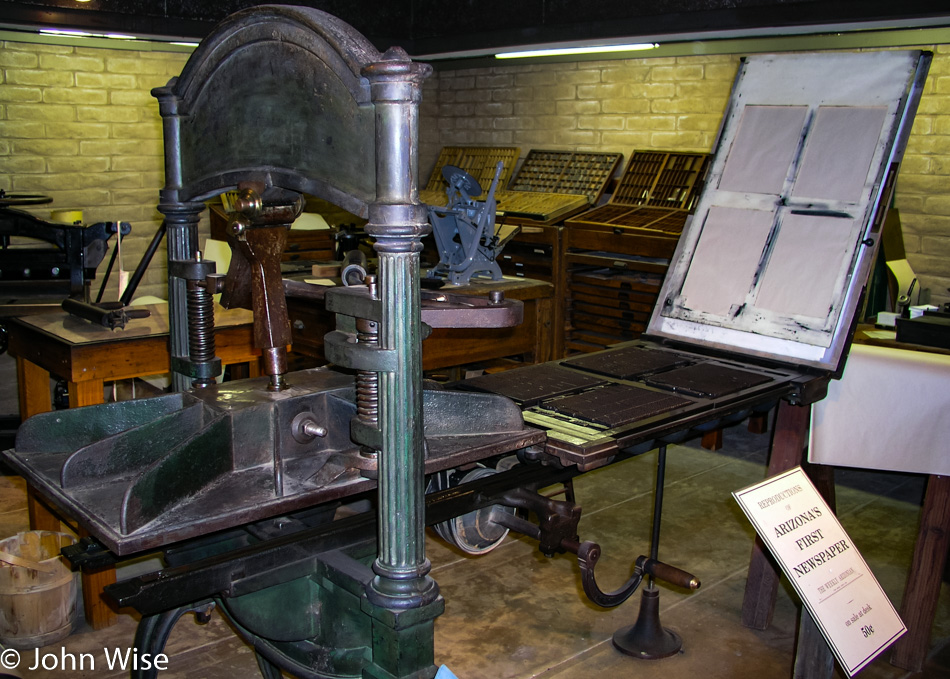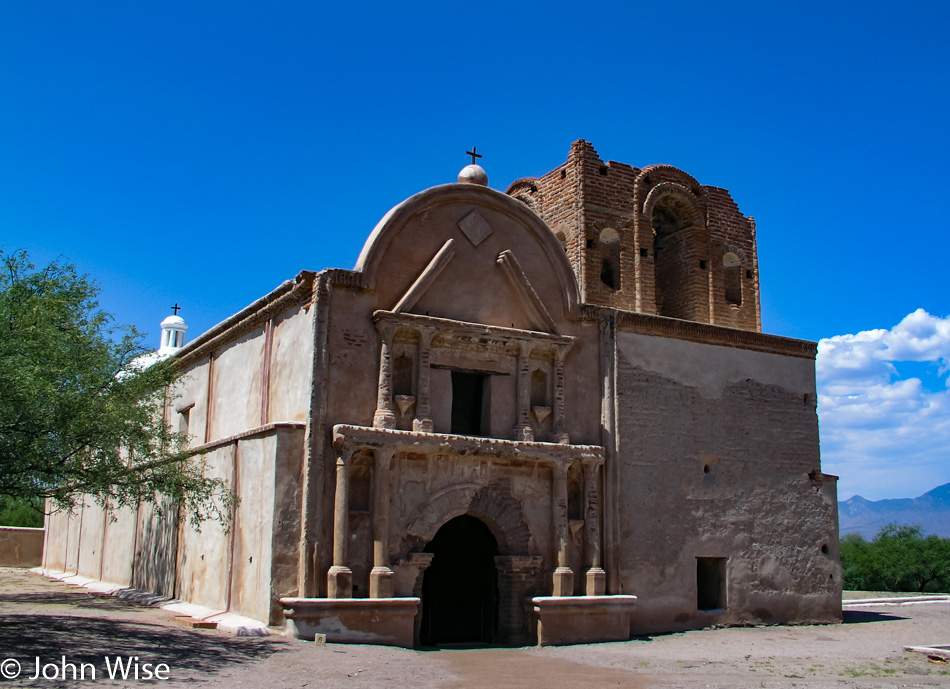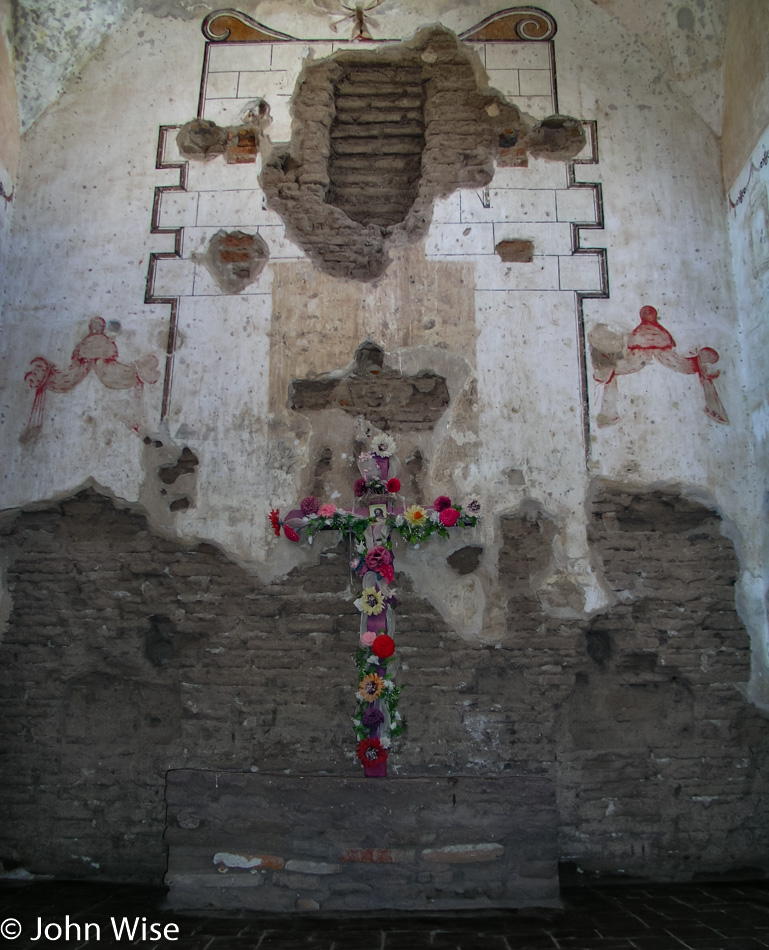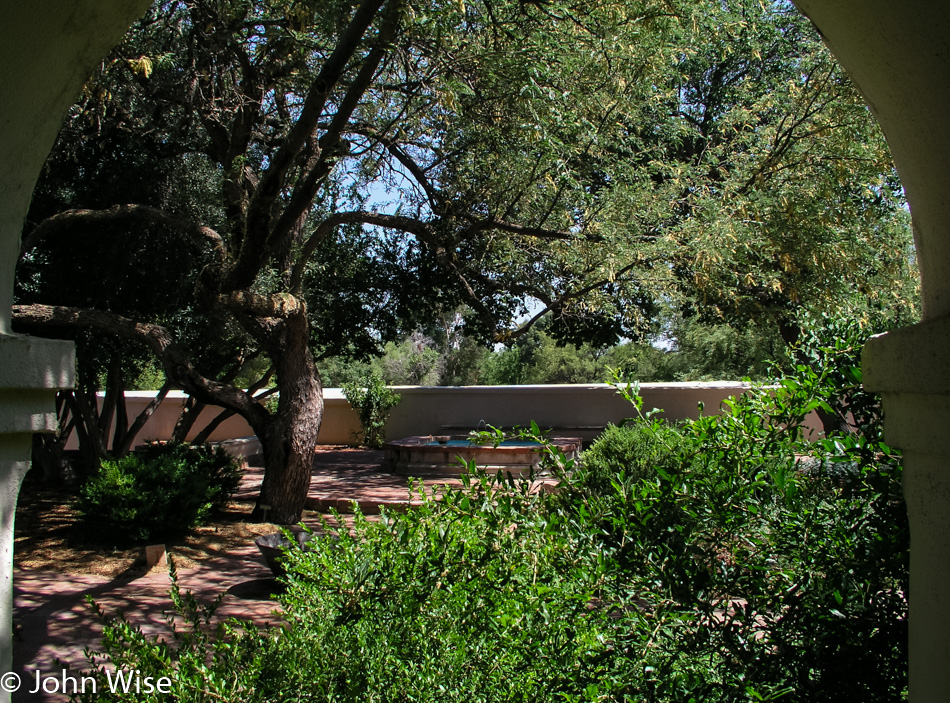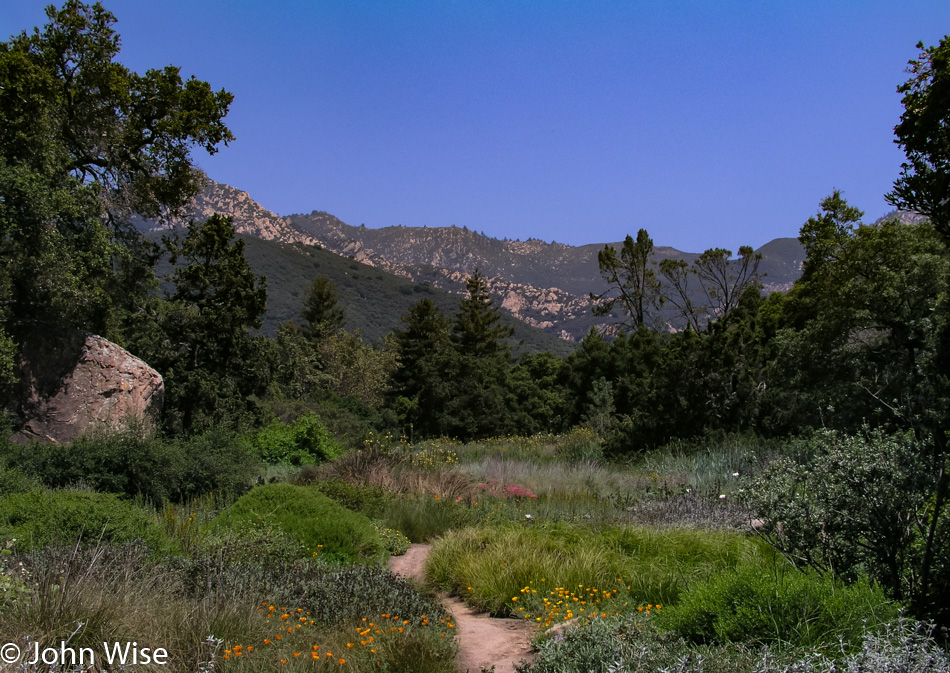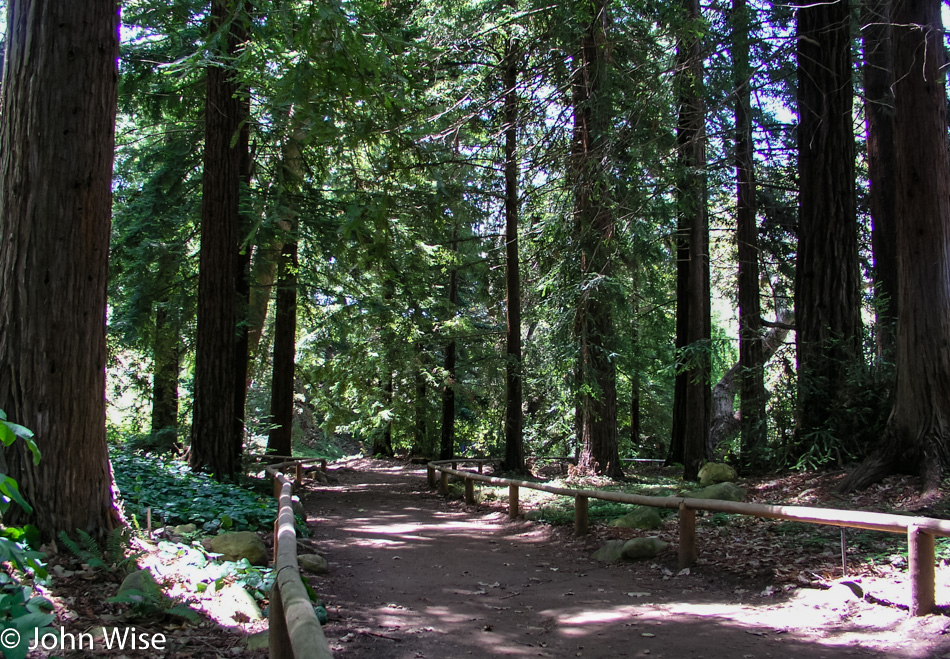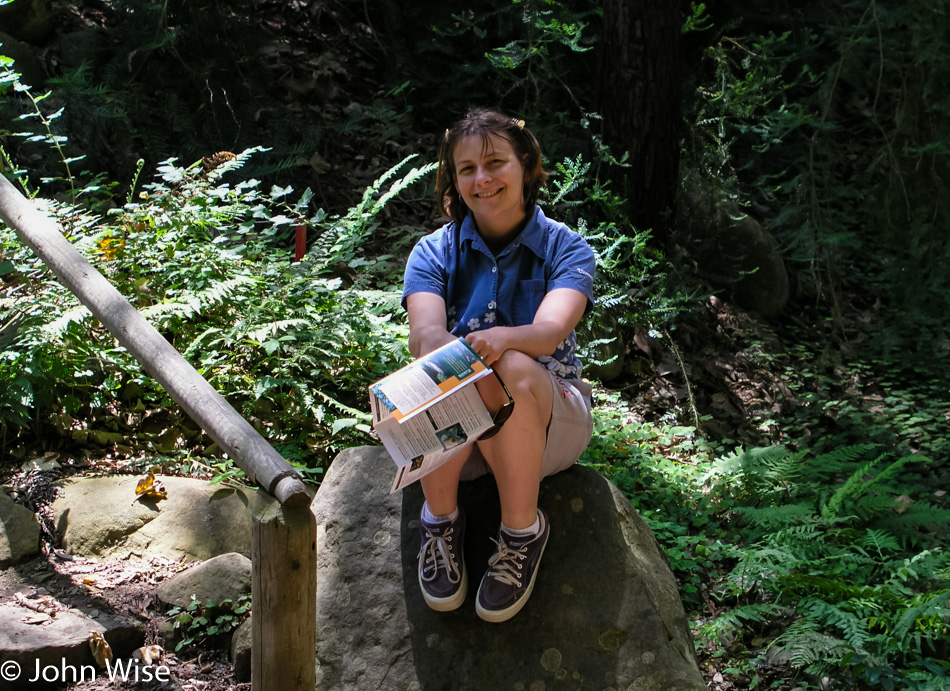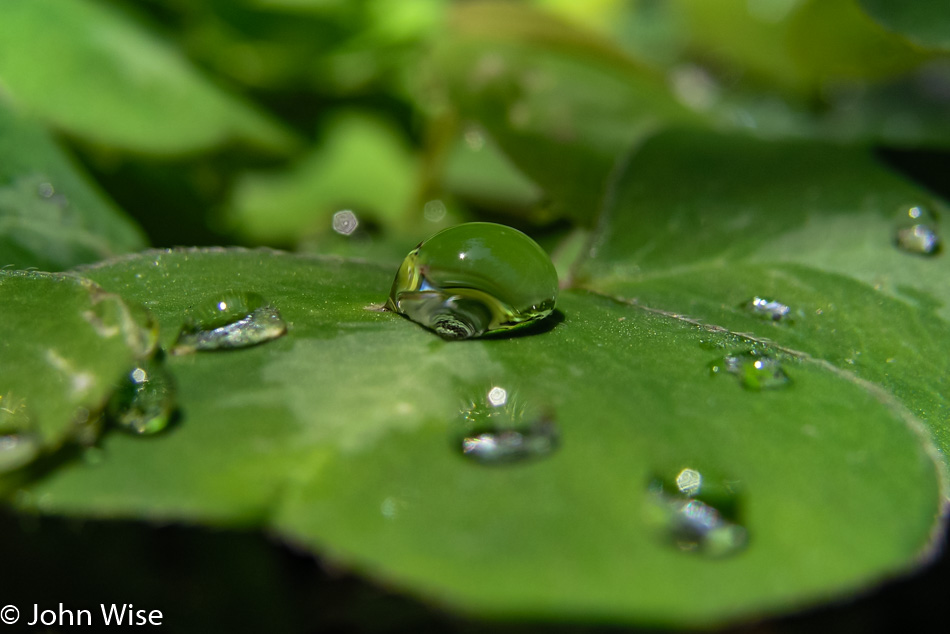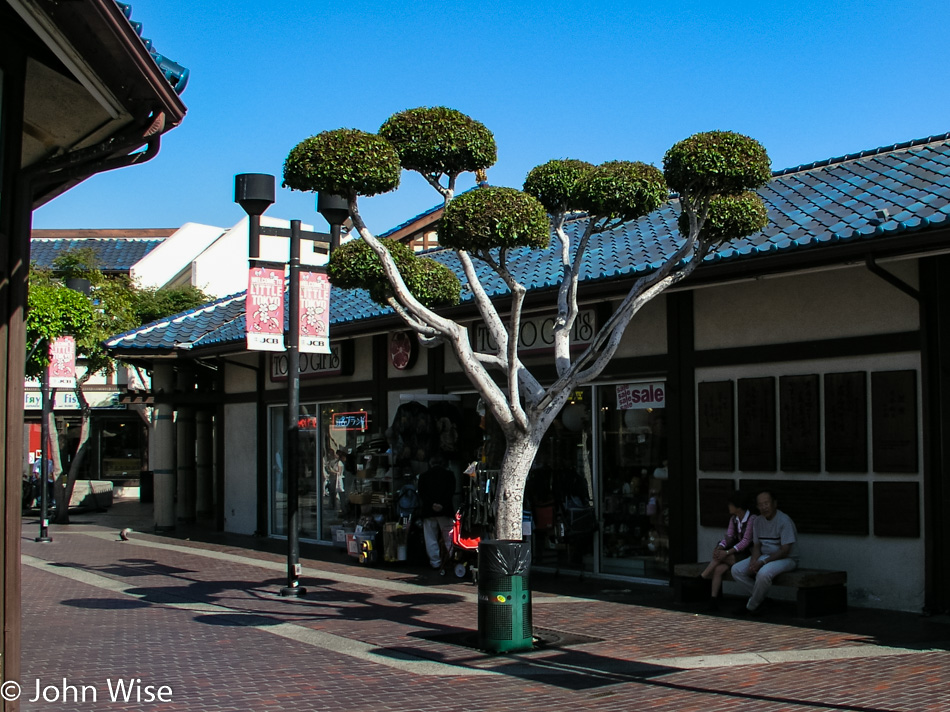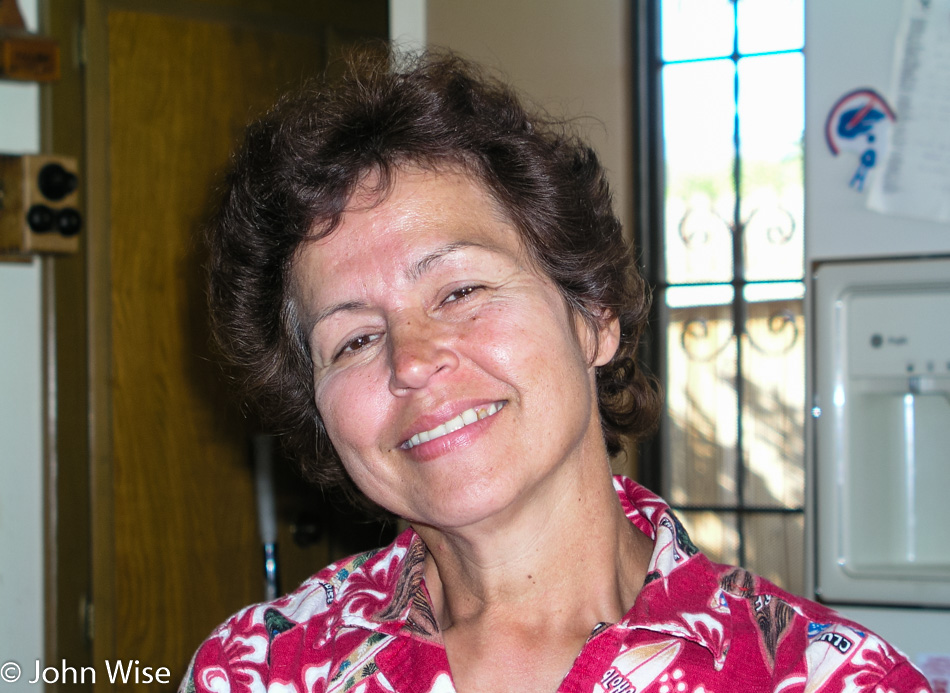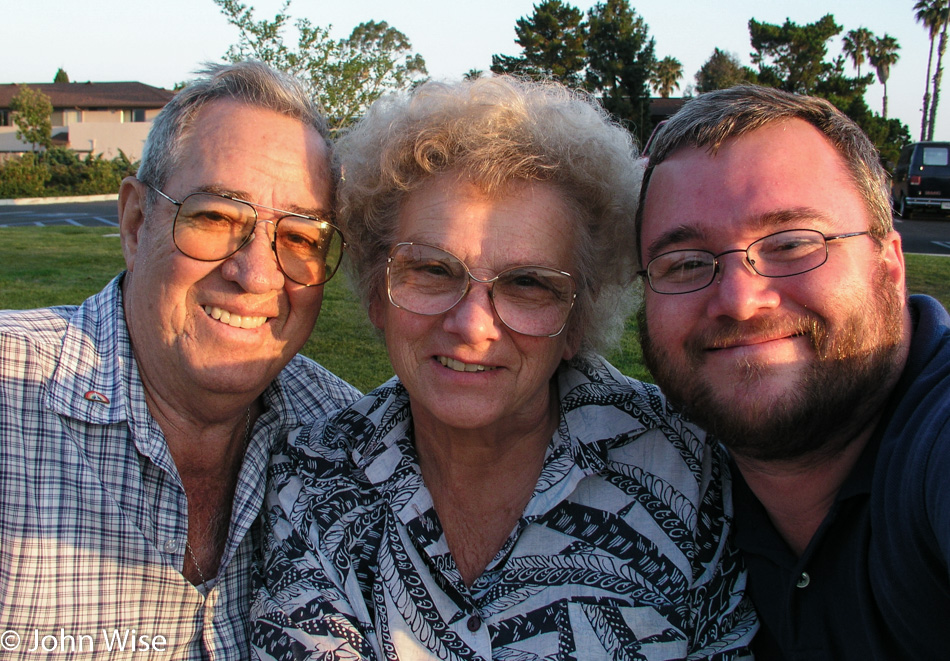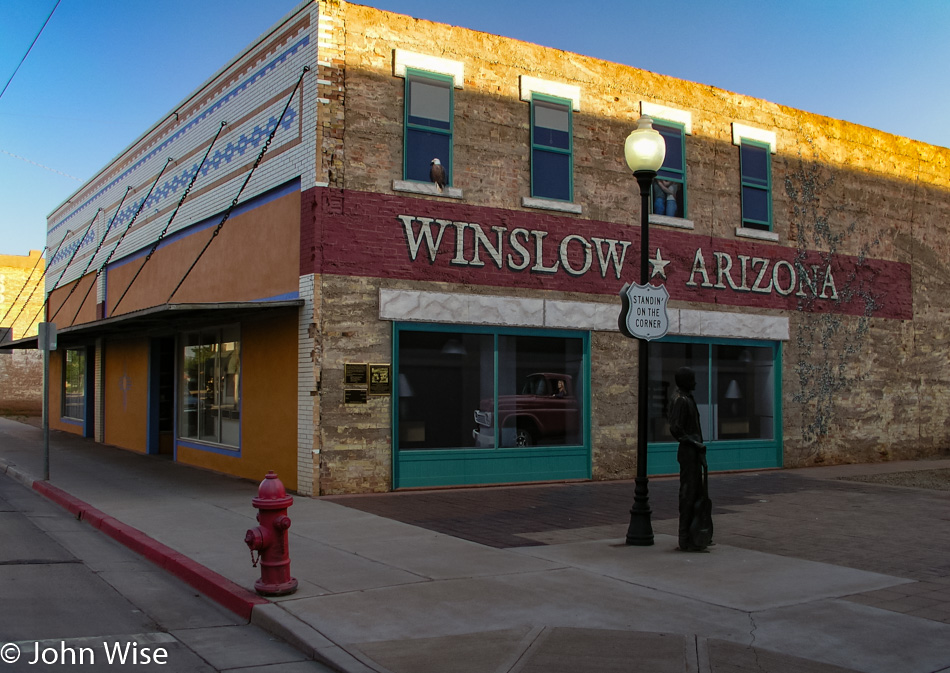
Last night, Caroline and I drove up to Winslow to spend the night and position us as far north as we could get to be within good proximity of the Hopi Reservation which is the ultimate destination for this journey. Winslow, like nearby Holbrook, is one of the few towns along the I-40 that survived its arrival as Route 66 was being laid to rest. When I say they survived, it’s a struggle, and the visitor can easily sense the pressure that exists against losing more businesses and population. Winslow was founded in 1882 as a railroad terminal for the Santa Fe Railroad.
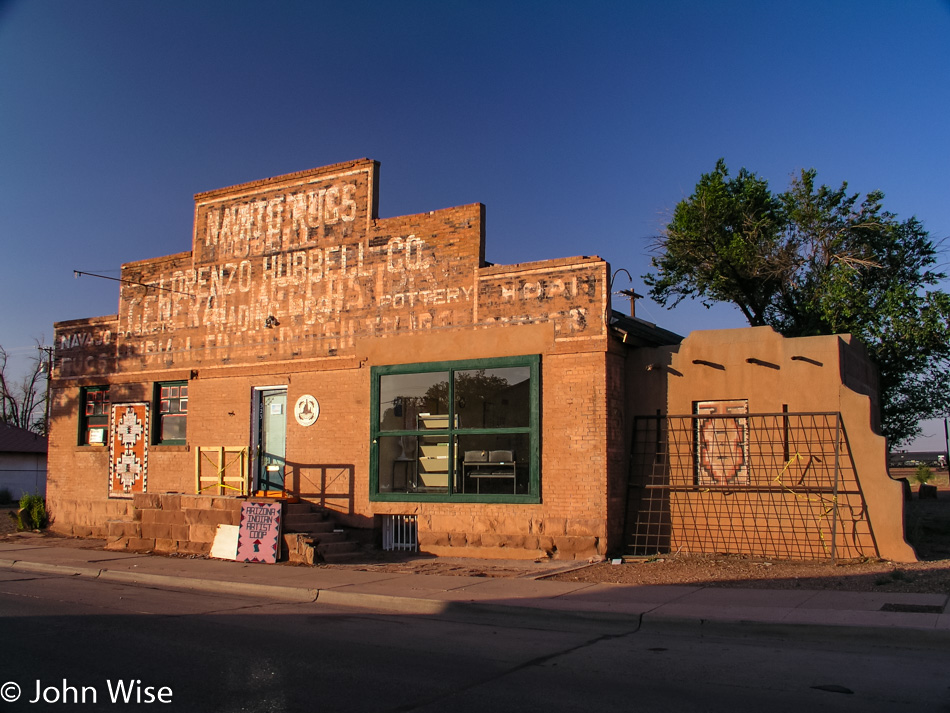
Back in the day, the name Lorenzo Hubbell let customers know they were dealing with experts; today, the worn-out sign is indicative of how these old trading posts have faded in importance. My social comment on this decaying world of Americana is as follows: I’d love to be here more often and even one day consider making a small town our home base, but due to the poor education and cultural illiteracy that has been normalized around a kind of mediocrity, beyond encounters with salespeople and those directly connected to tourism who understand the need for outside money there is a kind of abrasive attitude towards uppity outsiders. When did America begin to think that striving for being better and gathering intelligence was uppity, arrogant, and superior? Conversely, when did we accept dull banality as normal? In some respects, it’s as though we’ve built a multi-tiered America where those who do well enjoy their well-educated enclaves and fly to other exclusive stops on Earth while another class visits our lakes, national parks, forests, and old towns, and the third class is relegated to being stuck in place and time.
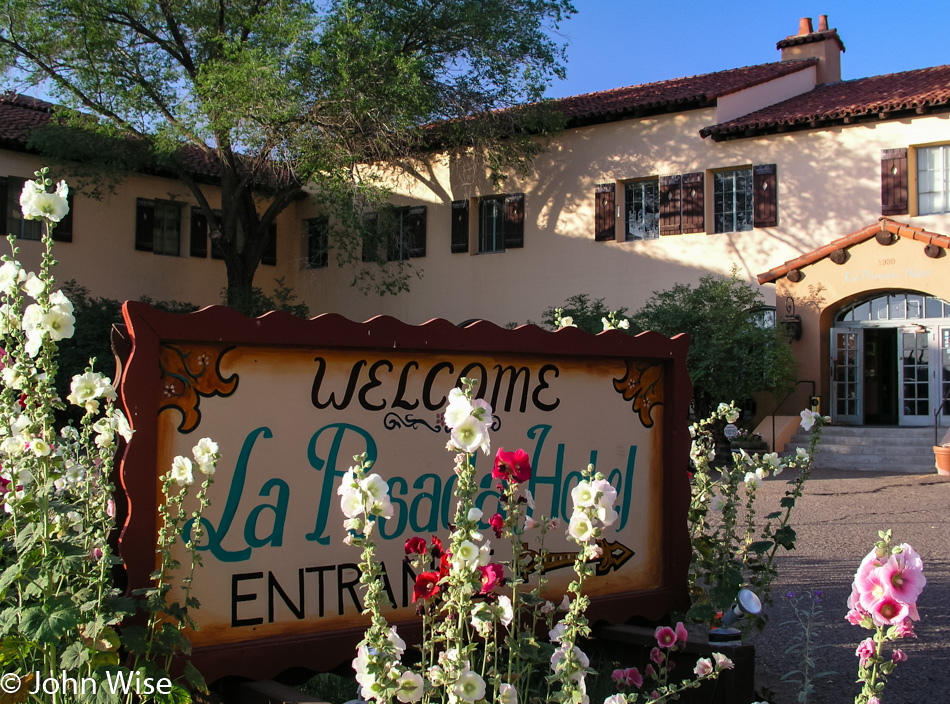
We’ve heard great things about the La Posada Hotel, which has attracted a host of celebrities over the years. The hotel itself was designed by one of my favorite architects, Mary Jane Colter, who at that time was already famous for her work in the Grand Canyon, designing Hopi House, Lookout Studio, and Phantom Ranch, to name but a few. Opened back in 1930 for the Fred Harvey company, this hotel has seen Albert Einstein, President Franklin D. Roosevelt, Amelia Earhart, Howard Hughes, John Wayne, Mary Pickford, and Betty Grable stay at this historic site. Back when it was built, it was known as Harvey House, but by 1957, it closed its doors and was subsequently used as offices for the Santa Fe Railway. After the railway abandoned it in 1994 and announced it was to be leveled, Allan Affeldt stepped up and saved it, reopening the hotel as La Posada in 1997. One day, we’ll return for our stay.
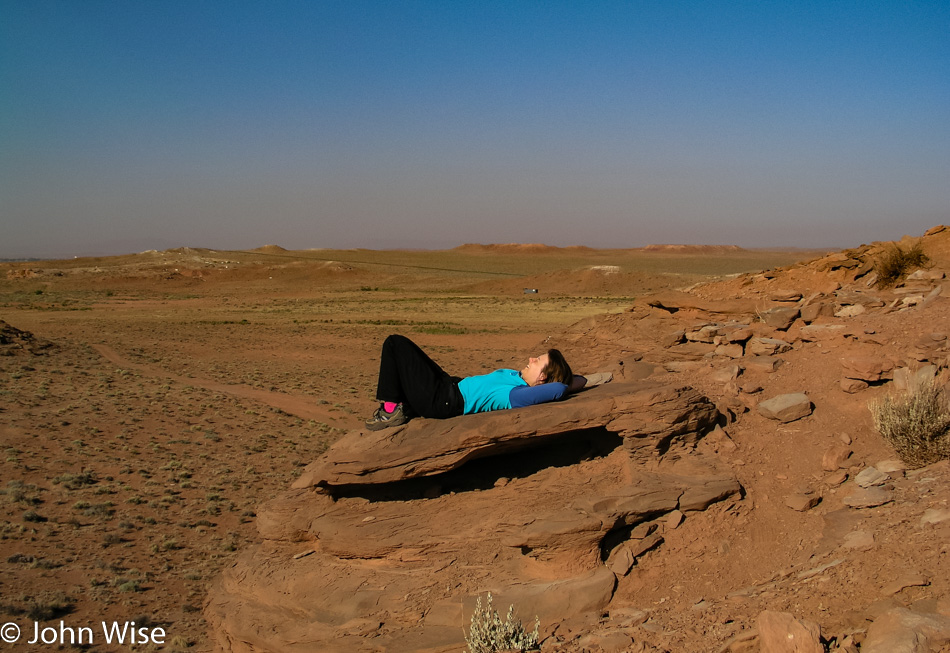
After coming up here a couple of times this week by myself, it was time to bring Caroline to Homolovi State Park so she could check out the grounds and the history that is found here. Homolovi is a 14th-century Anasazi site. While the pueblos are now in ruins, artifacts are strewn everywhere. The site we are visiting is known as Homolovi IV and is situated on a hilltop. More remote than the other sites at about 4 miles down a dirt road, it is estimated that there were once between 1200 and 2000 rooms standing here. As you pass a little gate, you will nearly immediately begin to see shards of pottery strewn about. Do not give in to temptation, and take even the smallest piece as, first and foremost, it is the rudest and inconsiderate act you can do to desecrate a land. You wouldn’t go into the White House and chip off a piece of the building for a souvenir; have the same respect here. Plus, the fine is upwards of $150,000 for stealing artifacts.
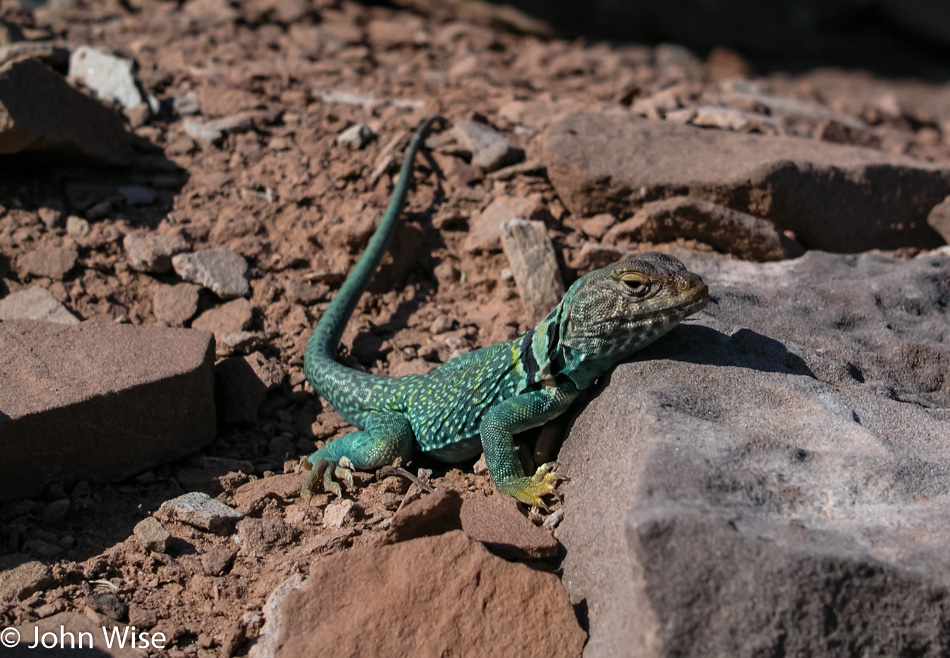
My second visit to Homolovi earlier this week proved to be fortuitous as I was in the visitor center when I overheard a conversation about an upcoming Kachina dance. After the ranger was done talking with the “Katsina” (a man who carves Kachina dolls), I inquired if it was open to the general public and was told it was and that it was happening this Saturday on Third Mesa in the village of Hotevilla. Wow, we’d never been to a Hopi ceremony and were thrilled at this possibility.
Continuing up the road, we head back to I-40 east to Highway 87 north. Stopping at the gravel driveway that points to the Painted Desert Rim Drive is a must. The view from this pullout is overwhelming because, from your perspective on the road, you cannot imagine what is less than 100 feet off the road. Pull over and take a walk to the rim; the view of the Painted Desert at this lookout will confirm why it is called the Painted Desert!
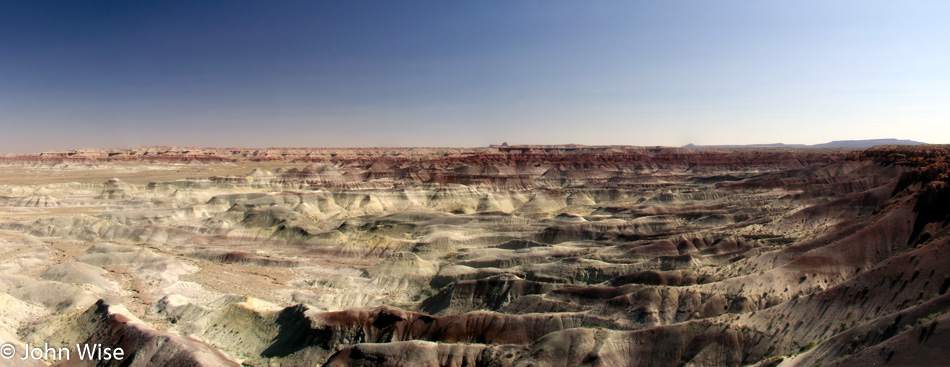
We entered the Second Mesa and the village of Shungopavi for a stop at the trading post of Tsakurshovi. We first became aware of this particular store on a visit through Bluff, Utah, when we had stayed at the Calf Canyon B&B and were told to look up Joseph and his wife, as he was knowledgeable about the Hopi Reservation and could guide us if we ever needed help in finding something. Tsakurshovi has a great selection of Kachina dolls, jewelry, books, and the world-famous T-shirt “Don’t Worry, Be Hopi.” The couple is super friendly and has been very helpful in regards to learning about locations, history, events, and customs. So armed with the knowledge of just where to park to be polite and what to do and what not to do during the Kachina dance, we made our way over to Third Mesa.
On the way to Third Mesa, you must pass the Hopi Cultural Center, and we used this moment for a break. There are public restrooms here, and we couldn’t know just what would be available to us ‘Behanna” at the dance, so we also took the opportunity to grab a bite to eat. Here at the cultural center, the Hopi have set up a hotel, a museum, a gift shop, and a restaurant. We recommend that you stop and visit the museum; it’s inexpensive and will go far to familiarize you with the Hopi; as you enter and leave, you will pass through the gift shop where you can find postcards, T-shirts, a few books, and some other miscellaneous gifts. If you don’t stop in the restaurant for some traditional fare, at least ask at the museum and purchase yourself some “piki” bread. Piki bread is razor-thin blue cornbread that is rolled up and is probably the thinnest bread on the planet, in addition to being the only blue bread in existence. In the parking lot of the center will be a number of vendors selling Kachina dolls, jewelry, food items, art objects, and other various gifts.
Once we arrived at Third Mesa, it was made clear to us as we parked the car that whatever we do, “DO NOT TAKE PHOTOS!” While I would have loved to have captured the beautiful rhythmic sounds of the Kachina and the incredible adornments each participant was bedecked in, I left the camera in the car. Someone back in the early 1990s was entrusted to attend a Kachina ceremony. He went home with his newly gained knowledge and portrayed a Kachina as a chainsaw-wielding murdering psychopath. This is the very antithesis of what the Kachina represents, and the Hopi People were rightfully indignant and banned white people from many of their holiest of ceremonies.
The sound, the sound, is like nothing you’ve heard before. This sound is mesmerizing, enchanting, and maybe a little disorienting. You hear but cannot see. Your approach to the square is hidden by old adobe homes. You see people on the roofs, and you hear the sound, but for a few moments, we are left with the impression of walking into a great unknown. As we turn the corner, it’s almost a shock to the senses. You can’t help but understand you have just come into the presence of a sacred ceremony. All of our Western cultural references are removed. We are immediately intruders, but only due to our guilt of uncertainty if we actually belong. This is an open ceremony; we are not unwelcome; only the gravity of history and respect for this great culture have pressed this guilt upon us. Within moments, I feel tears welling within me, so great is the emotion of respect and potential sadness that this might someday be lost or forbidden for non-Hopis to witness.
The Kachina have come from the mountains while their guide takes them through drum and song to bring to the Hopi people and the world a ceremony which, for us, imparted a beauty and significance that no photo, no video, no narrative can begin to relate to a distant reader or viewer. This occasion is for the attendant soul, a sort of pilgrimage to help the hopeful reach the strength to support our cultures, especially those that imbue pageantry and life’s force into the earth’s people. At this moment I’m aware of how alive these people are and how sacred and fleeting this world can be, so grateful am I for this ceremony.
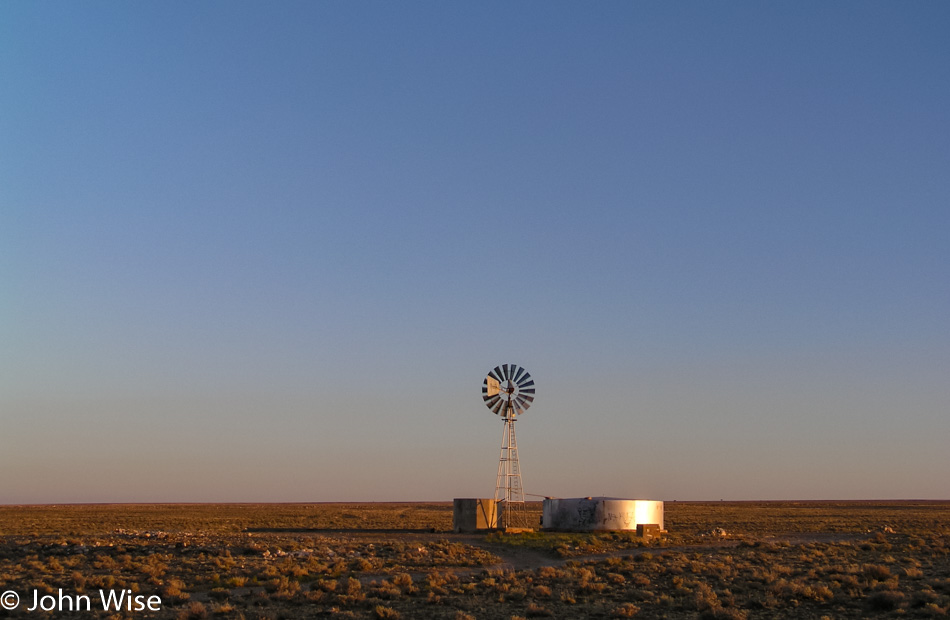
We leave in awe. No other ceremony has struck such a resonant chord. This may be as close to time travel as you could hope to approach in this lifetime. All signposts of modern society were gone: no cell phones, no cameras, no bleachers, no microphones, no advertising banners or sponsors, only adobe homes, sand, the people of the Hopi villages, and the Kachina. This could be the face of ultra-modernism, too, when someone realizes that all the artifice brings nothing about community and culture closer to the self, to leave behind that which is considered modern to allow the old to be new again. That a moment with the clan, the larger family of man, not just our immediate relatives, but the coming together of our distant relatives to experience a moment of commune with one another, that is real modernism. Throwing off the mantle of desire for even a short respite opens the eyes to a happiness unseen by the casual visitor, and hence, it is no wonder that the Hopi demand for privacy on these occasions should be adhered to by us few and fortunate guests who are experiencing a real moment in life.
With no real schedule for this road trip, we decided to visit First Mesa where the oldest occupied village in America sits. We enter Walpi from a steep road that ascends the mesa, which is the home of three Hopi villages in total. We approach the community center where tours begin, as self-guided tours are not allowed. Half a dozen Hopi women selling pottery and Kachina dolls greet us. In the center, we pay a small fee and head outside until our tour begins; as we wait we check out the wares. In just moments though, our tour is beginning, and we start a leisurely walk to a place we do not know.
Our guide is a friendly woman who walks us past the rez-dogs lying about. A couple of these mutts follow us, looking for scraps or a rub behind the ears. So enamoring is the architecture and views that her words are blending into the sound of the wind. We pass doors with signs welcoming us for a cold soda, bringing our attention to some locally made pottery or to view a couple of Kachina dolls made up here on the mesa. Maybe what we are seeing is life the way it’s been lived here for generations, although through our eyes, how that view is prejudiced or distorted is certainly open to interpretation. As we approach Walpi, it is pointed out that the sewage, electricity, and running water do not run this far out; this village is much the way it has been for hundreds of years. Only eight dwellings are still in use; it was told to us that to live here, you had to inherit from a family member the dwelling you would occupy, implying a direct lineage from the first inhabitants. The tour continued, and a few people in the group took time on the way back to look at Kachina dolls and pottery; we looked at many of the items but could not decide because there were so many beautiful pieces. In the end, we just bought a few bundles of dried Navajo tea (or Hopi tea, considering the location). This herbal tea is made from a plant called Greenthread (Thelesperma).
We spent the rest of the day wandering back to Winslow for another night up north.
